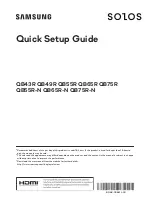
161
r
A
Studio Flash Lighting
Auto white balance may not produce the desired results with large
studio flash units. Use preset white balance or set white balance to
Flash
and use fine-tuning to adjust white balance.
A
Color Temperature
The perceived color of a light source varies with the viewer and other
conditions. Color temperature is an objective measure of the color of a
light source, defined with reference to the temperature to which an
object would have to be heated to radiate light in the same
wavelengths. While light sources with a color temperature in the
neighborhood of 5000–5500 K appear white, light sources with a lower
color temperature, such as incandescent light bulbs, appear slightly
yellow or red. Light sources with a higher color temperature appear
tinged with blue.
Note
: All figures are approximate.
A
See Also
White balance bracketing (
151) creates several copies of each
photograph taken, varying white balance to “bracket” the current value.
“Warmer” (redder) colors
“Cooler” (bluer) colors
3000
4000
5000
6000
8000
10000
[ K ]
q w
r
e
tyu i
o
!0 !1
q
I
(sodium-vapor lamps):
2700 K
w
J
(incandescent)/
I
(warm-
white fluorescent.): 3000 K
e
I
(white fluorescent): 3700 K
r
I
(cool-white fluorescent):
4200 K
t
I
(day white fluorescent):
5000 K
y
H
(direct sunlight): 5200 K
u
N
(flash): 5400 K
i
G
(cloudy): 6000 K
o
I
(daylight fluorescent): 6500 K
!0
I
(high temp. mercury-vapor):
7200 K
!1
M
(shade): 8000 K
















































